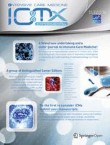Relevance of induced and accidental hypothermia after trauma-haemorrhage–what do we know from experimental models in pigs?
Recent experimental research has either focused on the role of accidental hypothermia as part of the lethal triad after trauma or tried to elucidate the effects of therapeutically induced hypothermia on the po...
